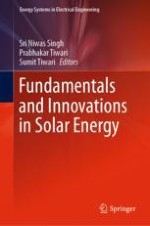2021 | OriginalPaper | Chapter
18. Potential and Financial Analysis of the Floating PV in Hydropower Dams of Thailand
Authors : Wanwisa Peanpitak, Jai Govind Singh
Published in: Fundamentals and Innovations in Solar Energy
Publisher: Springer Singapore
Activate our intelligent search to find suitable subject content or patents.
Select sections of text to find matching patents with Artificial Intelligence. powered by
Select sections of text to find additional relevant content using AI-assisted search. powered by
